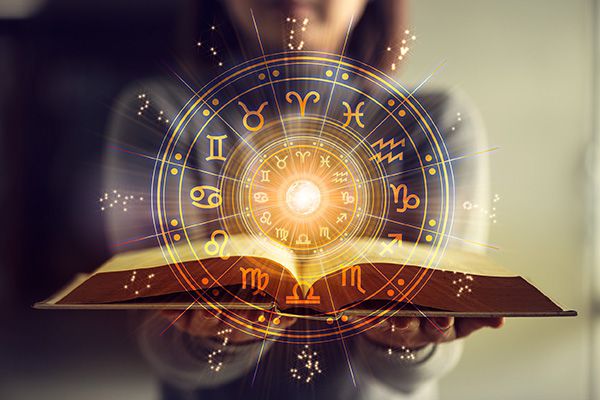The Factors That Indicate Your Place Here
 Recently, I’ve been receiving more desperate pleas from clients expressing sentiments like: “I truly don’t wish to stay here anymore,” “No one would even notice if I were gone,” or “This world isn’t meant for me; I never truly belonged here.”
Recently, I’ve been receiving more desperate pleas from clients expressing sentiments like: “I truly don’t wish to stay here anymore,” “No one would even notice if I were gone,” or “This world isn’t meant for me; I never truly belonged here.”
This feeling of hopelessness appears to have surged lately. For numerous individuals, there’s an overwhelming perception that life is spiraling out of control. A growing number of people are grappling with profound disconnection and despair, instigated by the unyielding pace of global turmoil and disorder.
Some also articulate a profound internal estrangement — a silent suffering stemming from the struggle to align their sincere values and aspirations with a daily existence that feels harsh, unsettling, unkind, and fractured. The kindness, unity, or progress they once held dear seems absent, prompting them to question their role in the universe, or whether they truly belong here.
This serves as a potent reminder of the pressing necessity for the world’s lightworkers to emerge — to provide support, nurture optimism, foster connections, and strive for a more empathetic and sustainable future.
I, for one, do not subscribe to this bleak perspective on my existence and purpose in this world, as nearly thirty years ago I encountered a serious illness that almost claimed my life. This traumatic experience brought me to a profound understanding: we design our lives before we come into this world, and we all undoubtedly belong here!
During a phase of unconsciousness in intensive care, I experienced a vivid out-of-body moment. I found myself in the company of a council of wise spiritual advisors. They communicated to me that I had more work to accomplish. Even though I honestly hesitated to linger, their message resonated deeply with me. I suddenly recalled that I had selected this path — and the insights it would confer — long before my birth.
My hope, my deepest desire, is that you realize the immense bravery you exhibit in every single moment when, with each breath, you reaffirm your choice to embrace and learn from your personal challenges. In that acknowledgment, you will discover your soul ~ Robert Schwartz
This encounter, along with past life regressions and various spiritual revelations, affirmed what I now firmly believe: we all possess a pre-birth soul purpose.
I remember, for instance, a past life regression in which I envisioned myself hovering like a bumblebee over a vibrant green landscape. Upon sharing this with my mentor — an expert in past life exploration – he remarked, “Ah, yes, you hadn’t yet taken form. You were seeking your next incarnation.”
His words struck a chord. Indeed, I had chosen England as my birthplace for the experiences it would provide. While England was merely the starting line, I always felt that I would journey through numerous countries — some of which would resonate with me on a deeper spiritual level than my homeland.
You Designed Your Soul Plan
Prior to our incarnation on Earth – or even in other galaxies or dimensions — I believe we convene with our council of spirit guides, angels, and ancestors to discuss the possibilities of the lessons we wish to pursue. Some lessons are gentle, while others are challenging initiations. We also select our earthly families. Sometimes these bonds are rooted in profound soul love. At other times, we simply need to inherit specific genetic or emotional traits to fulfill a certain soul contract.
For instance, one soul might choose to establish a business empire — not solely for material success, but to confront the demands of leadership, integrity, and collaboration. Another might decide to endure abuse or loneliness — not as a form of punishment, but to master the sacred practice of self-love and recognize that their worth is inherent, not defined by others.
Equally important, we also select how we will contribute to the world — whether to uplift, heal, inspire, guide, protect, or teach.
One soul may become a healer, educator, artist, or caregiver, bringing compassion and illumination to where it is most needed. Another may pursue a more subtle path — nurturing a conscious family, supporting others from behind the scenes, or simply grounding peace in their communities. Some souls opt to challenge societal norms, drawing attention to injustices or inequalities as part of a grander mission to awaken human awareness.
These contributions may not always be monumental or widely acknowledged. Sometimes, a quiet act of kindness, being a steadfast presence, or simply listening with genuine compassion is exactly what a soul was destined to accomplish. No act of love or service is ever wasted.
I’ve once encountered someone characterize our pre-birth soul plan as akin to a “flow chart” — a roadmap with significant milestones, yet adaptable enough to accommodate the influence of free will. Synchronicities — those mysterious and meaningful coincidences — often act as nudges from our guides, subtly guiding us toward our upcoming steps. They tend to manifest when we least expect them, yet most require them.
Essentially, I believe we determine the path for our soul’s journey, but free will continues to play a critical part. We establish goals and agree to certain challenges, and during pivotal moments, we can seek the assistance of our guides, angels, and ancestors. I believe they listen to us — yet they won’t intervene in our free will unless we explicitly request it.
Like an artist who paints not to complete a canvas, but to experience the act of painting, the soul chooses embodiment to experience, evolve, express, and remember its own divinity through contrast. Physical existence offers the soul what the spiritual realm cannot: form, choice, shadow, and consequence ~ Ankit Gupta
Believe in Your Reasons for Being Here
There exists a divine spark within each soul — a distinct vibration infused with purpose. When we align with this inner truth, even amidst strife or confusion, we start to recall who we are and why we chose to inhabit this world. This remembrance holds tremendous power. It reminds us that we are neither lost, nor forgotten, and that we are never alone on this journey.
Even when life feels arduous or uncertain, your soul’s voyage is progressing. And despite appearances, the world undeniably needs your presence, your voice, your light.
Yes, we still possess the ability to shape our reality and manifest abundance. However, even if we’ve opted to face health challenges or encounter difficult individuals, we are never powerless. We always maintain the freedom to choose our responses — and therein lies our greatest strength.
So, please believe that you are essential. Even amid the noise, confusion, and chaos of the world, your existence is not by chance. Honor your soul’s purpose and embrace your path.
As the Desiderata poem so beautifully articulates: “You are a child of the universe, no less than the trees and the stars; you have a right to be here.“
|
Shani is a certified practitioner in Reiki, aromatherapy, reflexology, body spin, and animal telepathy who completed psychic development training at the Arthur Findlay College of Psychic Research in England. A published author, her articles and predictions have featured in numerous esteemed magazines and on psychic platforms, and she has provided readings for various celebrities and even political leaders in Africa. Thanks to her empathy, individuals find it easy to connect with her. Each month, she participates in a psychic circle, and the insights she receives from Spirit consistently astonish everyone in attendance. Born in London, Shani has traveled extensively and pursued the study of African Mysticism, thereby infusing her unique essence into the lives of those seeking her formidable gifts. What she has gleaned from her travels is that clients often possess a deep yearning to reconnect to the source of their existence. Experience a reading with Shani at PsychicAccess.com. |
Experiencing a sense of belonging is a fundamental aspect of being human. It’s the sensation of being accepted, valued, and understood by those around you. Nevertheless, there may be moments when we doubt our place within a particular situation or group. We might feel as though we don’t belong or aren’t good enough. However, the reality is that you do indeed belong here. Here are several reasons why:
1. You are one of a kind: Each individual is distinct, possessing their own skills, talents, and experiences. Your uniqueness is what renders you valuable and irreplaceable. No one else can contribute what you can, and that is precisely why you belong here.
2. You have valuable contributions: Whether it’s your creativity, kindness, humor, or intellect, you possess something to share with the world around you. Your presence enhances the lives of others, and this is why you belong here.
3. You deserve respect: You are deserving of love, respect, and joy. You have the right to be treated with kindness, and you are entitled to occupy your space in this world. You are enough just as you are, which is why you belong here.
4. You are part of a bigger community: We are interconnected, each playing a role in the larger fabric of humanity. Your presence is significant, and you have a role to fulfill in the world around you. You belong here because you are an essential part of the community.
5. You can grow and evolve: Regardless of your current situation in life, you possess the potential to learn, grow, and transform. You have the ability to overcome challenges, achieve your objectives, and become the best version of yourself. Your journey is far from over, and that is why you belong here.
So, the next time you find yourself doubting whether you truly belong, reflect on these reasons why you do. You are unique, you have contributions to make, you are worthy, you are part of a larger community, and you are capable of growth. You belong here, and the world is enhanced by your presence. Continue reading

















